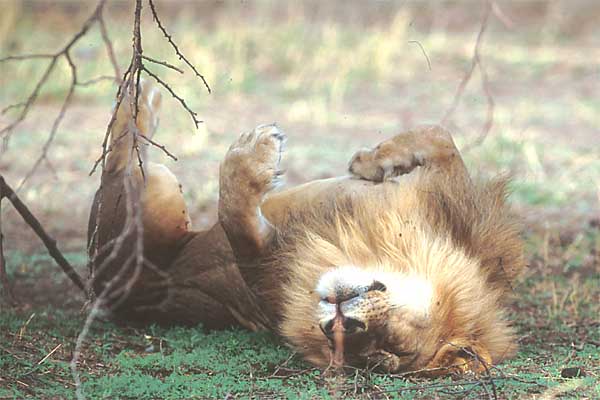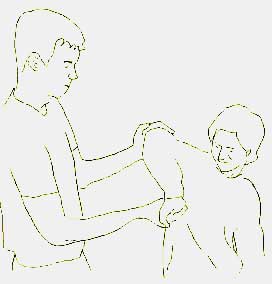Daoist Ritual Standing
/Daoism has always maintained its roots to the shamanic and ecstatic worlds and at the same time used them do distinguish itself. Orthodox Daoist's do not practice any martial arts yet Daoists use swords in ritual dance and summon demon armies.
Ancient martial arts traditions are surely an important influence in the development of Daoism, and Daoism has continued to spin-off inspirations for martial arts. I have a bunch of posts dealing with this that I'm working on, but let me start by addressing an interesting quote that "adz" left in the comments sections of my posts on standing.
For me standing is a very active practice (as bizarre as that sounds to some folk). There are so many different aspects that can be worked, but Yao ZhongXun has already said it much better than what I ever could: Training of the mind alone is not Yiquan as is not physical practice alone. The two must be combined. The essence can only be cultivated by integration of the mind and body. Visualization or mental imagery must be employed in relaxed standing (Zhan Zhuang) to direct an integrated neuromuscular coordination that results in a whole-body response. Kinesthetic perception of the internal/external opposing force pairs (Zheng Li) and internal isometrics is developed to seek, sense, experience, cultivate, understand and master the whole-body balanced force (Hun Yuan Li).
This secular attempt to describe jindan (the golden elixir meditation) runs into the same problems Mantak Chia did.
In Taijiquan it is standard to learn "peng, ji, lu, and an" as four separate internal changes and then put them together in a seamless circular motion. The circles then become smaller and smaller. In Xingyi a very similar method is used in, for instance, the metal element to create cutting movement which resembles a forward moving skill-saw-blade.
Wang Xiangzai, the founder of the Yiquan system mentioned above in the quote, may have developed his method from Xingyi. One practice we do in Yiquan is to stand like we are holding a tree. We then move the imaginary tree imperceptibly up-down, left-right, forward-back, and inward-outward. Like taijiquan, this individual training eventually becomes a seamless movement and what starts as small circles becomes smaller and smaller until we can integrate these small circles into our larger movements. We then have power in all directions.
It is a stretch to call this meditation or standing still, no? My friend was joking that it is meditation for people with Attention Deficit Disorder (A.D.D.).
(Here I go digging myself a whole so deep I can't possibly dig myself out in one post.)
In Acupuncture we call the first needle, "calling the qi to order." In Daoist ritual the first act is also called, "calling the qi to order." To call the qi to order one must first invoke the Perfected Warrior, Zhen Wu. This is done by standing still using the physicality of the method described above. It is a totally ready stance--able to instantaneously issue force in all directions.
But Zhen Wu is not just a physicality, he is a whole way of seeing the world, and he is the first stage in the practice of jindan (golden elixir) (Daoist ritual was totally integrated into a solo meditation system during the Tang Dynasty, 600 CE.)
Zhen Wu is visualized in his armor with skin like the night sky drawing inward, chain and silk is woven into his hair. He has bare feet and he is energetically on the edge of his seat. Think of him as holding a sword in one hand, without a sheath, the tip of the blade is dragging on the ground. He is the embodiment of the taijiquan concept song (or sung, let go, sink) he is utterly fearless, the god of nothing-to-lose.
This is stage one. Don't get me wrong, stage one is cool. But these secularists have no way to deal with stage two, and no coherent explanation of fruition. (Perhaps we should have an old-folks home especially for people who can issue power in all directions at once.)
UPDATE: the quote about mentions "whole body balanced force," when I wrote this ten years ago I didn't know what that was. Now I teach it! But I call it the six dimensions and three thresholds of counterbalancing.

 Back in the day, George Xu told me a story about a
Back in the day, George Xu told me a story about a
 Getting enough sleep is one thing. Consistently sleeping until you are not tired is another thing entirely.
Getting enough sleep is one thing. Consistently sleeping until you are not tired is another thing entirely. .
. The Taijiquan Classics say: "The most important thing in a fight is that you win!"
The Taijiquan Classics say: "The most important thing in a fight is that you win!" Here is a concept from Chinese Medicine which has a lot of currency for internal martial artists.
Here is a concept from Chinese Medicine which has a lot of currency for internal martial artists. Sun Tzu,
Sun Tzu, 
 I think this picture helps explain why people developed rooting techniques. From the time of Alexander the Great until Julius Caesar this type of warfare was totally dominant.
I think this picture helps explain why people developed rooting techniques. From the time of Alexander the Great until Julius Caesar this type of warfare was totally dominant. with something called a Centurion. A Centurion was 100 men divided into 20 groups of 5 which were capable of acting as a unit.
with something called a Centurion. A Centurion was 100 men divided into 20 groups of 5 which were capable of acting as a unit. This is a continuation of the series on jin, that started below with a discussion of pulsing.
This is a continuation of the series on jin, that started below with a discussion of pulsing. Twisting unevenly will cause lots of damage. That's how joint locks and breaks work. Practice on a chicken if you want. For instance, to bust the wrist, just twist it while immobilizing the elbow.
Twisting unevenly will cause lots of damage. That's how joint locks and breaks work. Practice on a chicken if you want. For instance, to bust the wrist, just twist it while immobilizing the elbow.